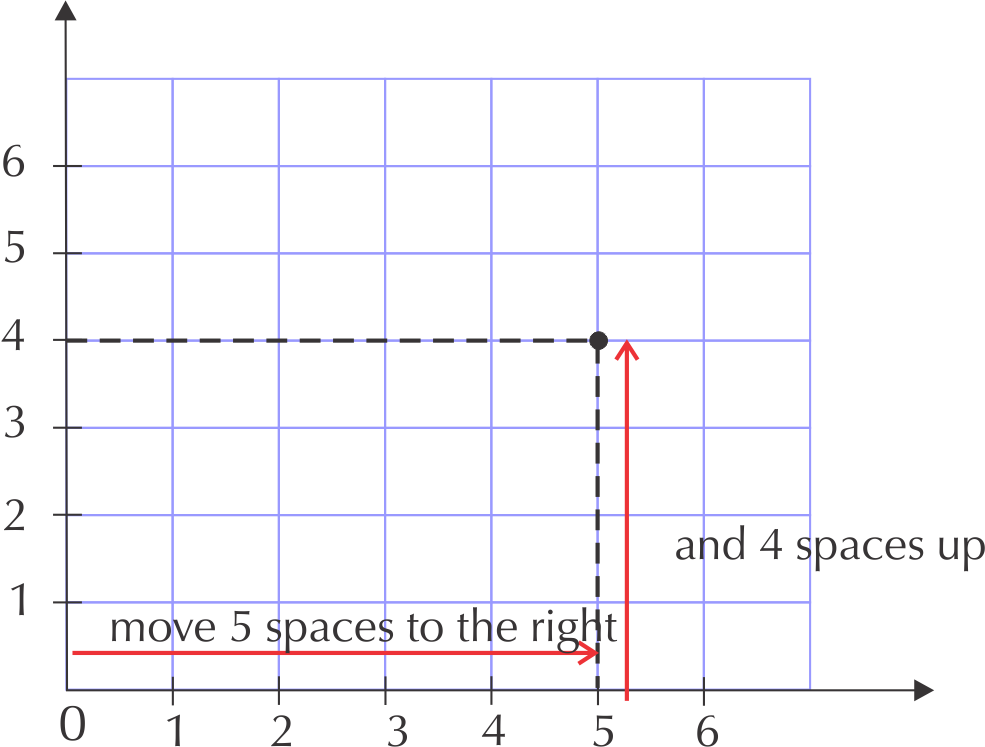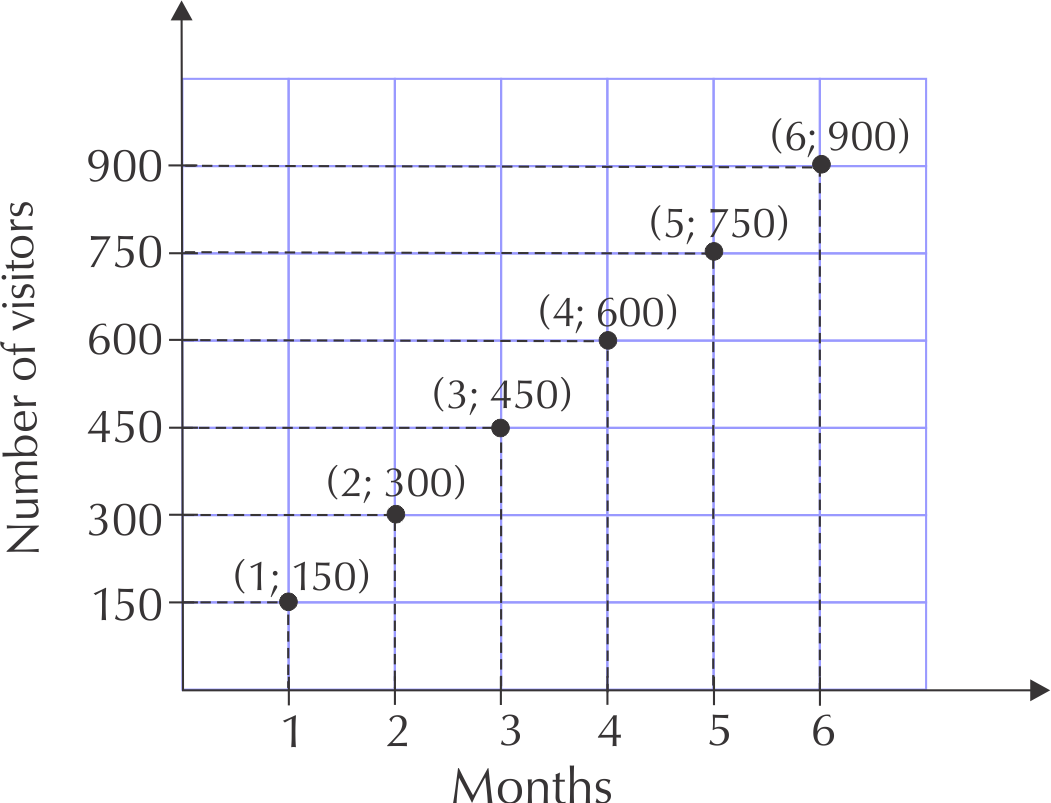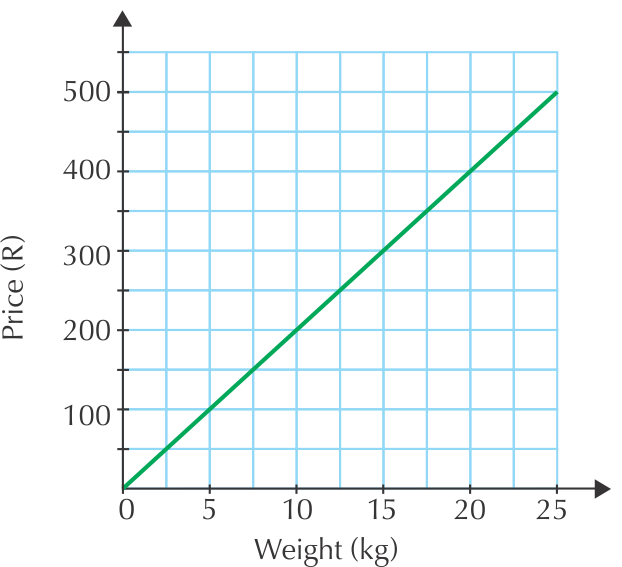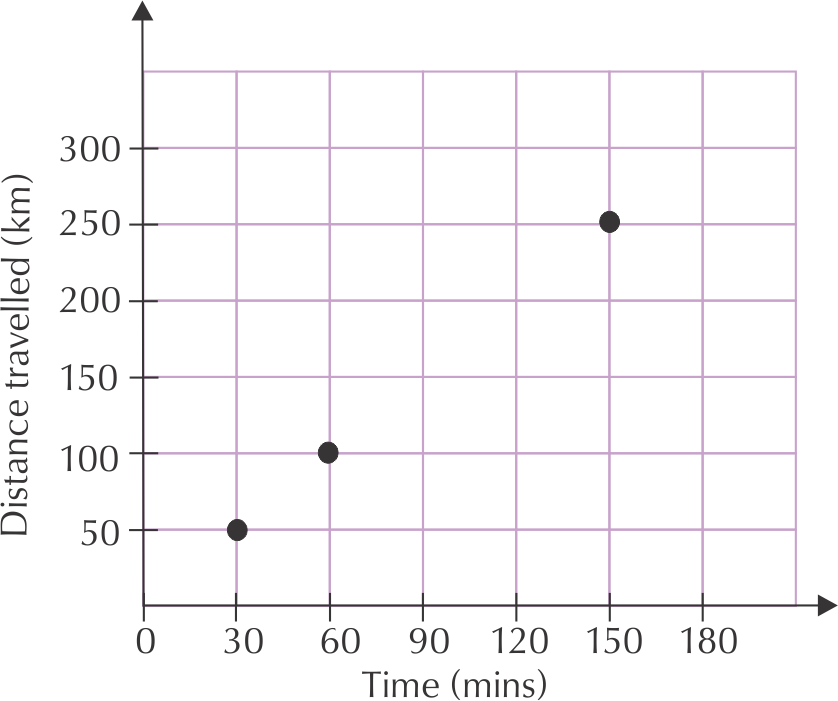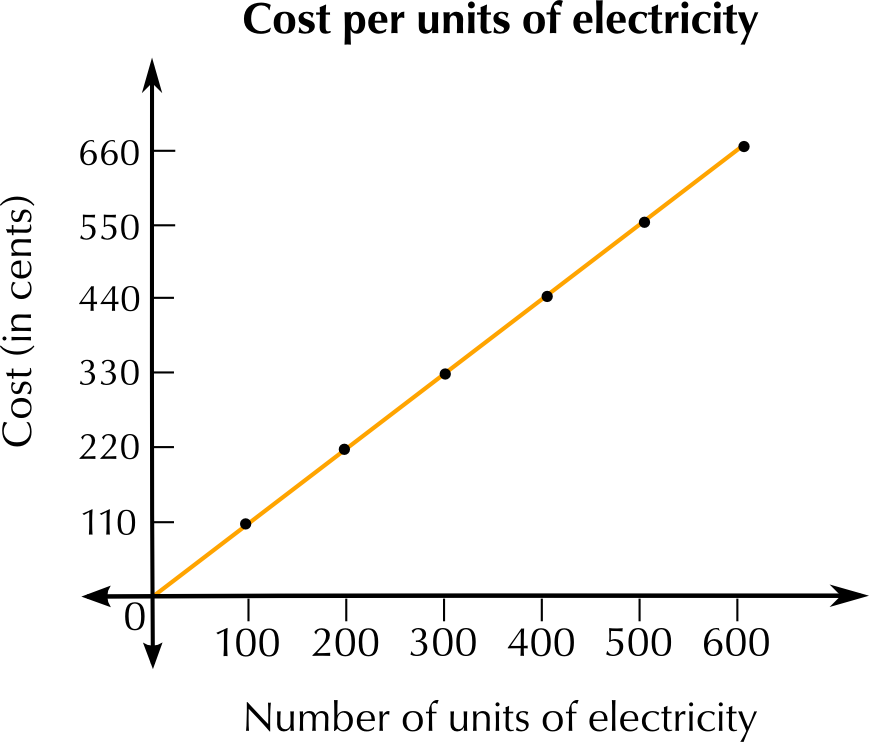Using the above graph, complete the table showing the same relationship:
Weight of potatoes (kg) | \(\text{5}\) | \(\text{10}\) | \(\text{15}\) | \(\text{20}\) | \(\text{25}\) | |
Cost (R) | \(\text{100}\) | | | \(\text{400}\) | | \(\text{600}\) |
Weight of potatoes (kg) | \(\text{5}\) | \(\text{10}\) | \(\text{15}\) | \(\text{20}\) | \(\text{25}\) | \(\text{30}\) |
Cost (R) | \(\text{100}\) | \(\text{200}\) | \(\text{300}\) | \(\text{400}\) | \(\text{500}\) | \(\text{600}\) |
What will 7,5 kg of potatoes cost? Read this from the graph.
\(\text{R}\,\text{150}\)
If you spend \(\text{R}\,\text{300}\), what is the weight of potatoes you have bought?
\(\text{15}\) \(\text{kg}\)
Identify the independent and dependent variables on the graph.
Weight is the independent variable. Price is the dependent variable.

